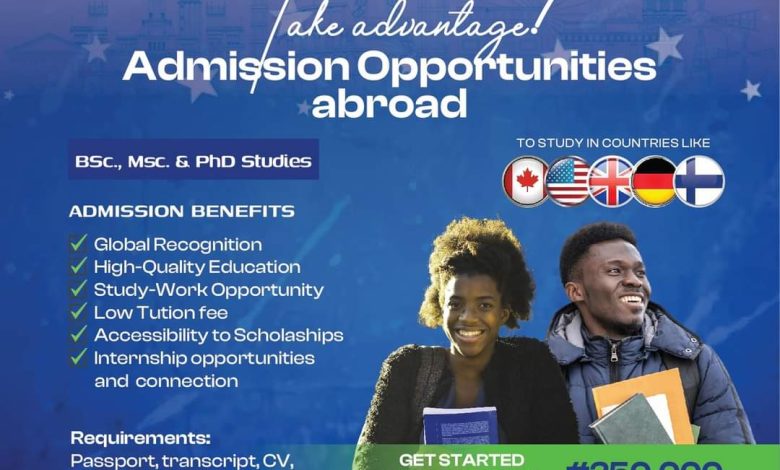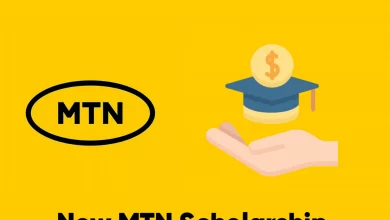Navigating the Path: How to Apply for a World Bank Scholarship Program

Navigating the Path: How to Apply for a World Bank Scholarship Program
Introduction:
Dreaming of pursuing higher education with financial support from a reputable organization? The World Bank Scholarships Program offers an incredible opportunity for students around the world to achieve their academic aspirations. In this comprehensive guide, we’ll walk you through the step-by-step process of applying for a World Bank Scholarship, helping you pave the way toward an enriching educational journey.

1. Research Scholarship Opportunities: Start by exploring the World Bank Scholarship Programs available for your desired level of study (undergraduate, graduate, or doctoral). Visit the official World Bank Scholarships website to gain insights into eligibility criteria, application deadlines, and required documentation.
2. Identify Eligibility Criteria: Review the eligibility requirements carefully to ensure you meet the necessary criteria. This might include factors such as citizenship, academic background, and work experience. Be sure you’re a suitable candidate before proceeding further.
3. Choose Your Preferred Program: The World Bank Scholarships Program covers various disciplines and fields of study. Choose a program that aligns with your academic interests and career goals. Research the program’s curriculum, faculty, and potential career paths associated with your chosen field.
4. Prepare Required Documentation: Gather the necessary documents, which typically include:
- Academic transcripts and certificates
- Letters of recommendation
- Statement of purpose or motivation letter
- Curriculum vitae (CV)
- Language proficiency test scores (if applicable)
- Proof of work experience (if required)
5. Craft a Compelling Statement of Purpose: Your statement of purpose is your chance to highlight your academic background, career aspirations, and reasons for applying for the scholarship. Clearly articulate how the scholarship aligns with your goals and how it will contribute to your personal and professional growth.
6. Secure Strong Letters of Recommendation: Reach out to individuals who can provide insightful recommendations that speak to your academic capabilities, character, and potential. Ensure your recommenders are familiar with your achievements and aspirations.
7. Tailor Your Application: Customize your application materials to demonstrate how you meet the specific requirements and values of the World Bank Scholarships Program. Highlight relevant experiences, achievements, and qualities that align with their goals.
8. Check Application Deadlines: World Bank Scholarship Programs have specific application deadlines. Mark these dates on your calendar and plan to submit your application well in advance to avoid any last-minute rush or technical issues.
9. Proofread and Edit: Before submission, meticulously review your application materials for grammar, spelling, and clarity. Consider seeking feedback from mentors, teachers, or peers to ensure your application is polished.
10. Submit Your Application: Follow the application guidelines provided by the World Bank Scholarships Program and submit your application through the designated platform. Ensure all required documents are attached and all fields are accurately filled.
11. Stay Informed: After submitting your application, regularly check your email for updates from the World Bank Scholarships Program. They might request additional information or provide notifications about the selection process.
12. Prepare for Interviews (if applicable): Some World Bank Scholarship Programs might require interviews as part of the selection process. If you’re shortlisted, prepare thoroughly by researching common interview questions and practicing your responses.
Unveiling Opportunities: How to Research Scholarship Opportunities for Your Academic Journey
Embarking on a journey to secure a scholarship can be a transformative step towards achieving your educational dreams. Thoroughly researching scholarship opportunities is the foundation of this process. In this guide, we’ll unveil effective strategies to help you navigate through the vast array of scholarships available, ensuring you identify the best-fit options for your academic pursuits.
1. Define Your Goals and Priorities: Start by clarifying your academic and career goals. Determine your preferred field of study, desired level of education (undergraduate, graduate, or postgraduate), and potential study destinations. Understanding your priorities will narrow down your search.
2. Utilize Scholarship Search Engines: Harness the power of online scholarship search engines to streamline your research. Websites like Scholarship.com, Fastweb, and Peterson’s Scholarship Search allow you to filter scholarships based on criteria such as location, field of study, and eligibility.
3. University and College Websites: Visit the official websites of universities and colleges you’re interested in. Educational institutions often offer scholarships for both domestic and international students. Explore their scholarship sections to learn about various funding opportunities.
4. Government Scholarship Programs: Many governments around the world provide scholarships for international students to study in their countries. Research the official websites of your desired study destination’s government to discover available options.
5. International Organizations and NGOs: Organizations like the United Nations, UNESCO, and World Health Organization offer scholarships in various fields of study. Research their programs to find opportunities aligned with your academic interests.
6. Professional Associations and Industry Partnerships: Research professional associations related to your field of interest. These organizations often offer scholarships to students pursuing careers in specific industries, encouraging professional growth.
7. Cultural Exchange Programs: Explore programs like the Fulbright Scholarships, Erasmus Mundus, and Chevening Scholarships, which facilitate cross-cultural exchanges and academic opportunities between countries.
8. Private Foundations and Corporations: Many private foundations and corporations sponsor scholarships to support education and community development. Research companies with a commitment to social responsibility and education.
9. Social Media and Online Forums: Join social media groups and forums dedicated to scholarship discussions. These platforms often share timely information about scholarships, as well as insights from fellow applicants.
10. Alumni Networks and Networking Events: Connect with alumni from your prospective universities. They can provide valuable insights into scholarship opportunities and share their own experiences.
11. Faculty Recommendations: Consult with your professors and academic advisors. They might have information about scholarships specific to your field or program.
12. Local Resources: Check with your school’s counseling office, public libraries, and community centers. These local resources might have information about lesser-known scholarships.
13. Review Eligibility and Criteria: Thoroughly read the eligibility criteria, application requirements, deadlines, and award amounts for each scholarship. Make a list of scholarships that align with your profile and goals.
Unlocking Opportunities: How to Identify Eligibility Criteria for Scholarships
Securing a scholarship is a significant achievement that can make your educational dreams a reality. To increase your chances of success, it’s essential to understand and meet the eligibility criteria set by scholarship providers. In this guide, we’ll delve into the intricacies of identifying and satisfying eligibility requirements, ensuring you’re well-prepared to pursue the scholarship of your dreams.
1. Thoroughly Review Scholarship Details: Start by carefully reading the scholarship’s official description and guidelines. These details provide valuable insights into the scholarship’s purpose, target audience, and specific eligibility criteria.
2. Academic Qualifications: Scholarships often have minimum academic requirements, such as a specific Grade Point Average (GPA) or standardized test scores (SAT, ACT, GRE, etc.). Ensure you meet these prerequisites before proceeding further.
3. Field of Study or Major: Some scholarships are tailored to specific fields of study or majors. Confirm that your intended course of study aligns with the scholarship’s focus.
4. Level of Study: Determine if the scholarship is intended for undergraduate, graduate, or doctoral students. Applying for scholarships that match your level of study ensures you’re eligible to compete for the award.
5. Citizenship and Residency: Check if the scholarship is open to international students or limited to specific countries or regions. Some scholarships may be exclusively for citizens or residents of a particular country.
6. Age Restrictions: Certain scholarships may have age limitations, targeting students within a specific age range. Ensure you fall within the specified age bracket.
7. Financial Need: While not all scholarships are based on financial need, some prioritize candidates with demonstrated financial challenges. Understand whether financial need is a consideration and gather relevant documentation if required.
8. Extracurricular Activities and Leadership: Scholarships often value well-rounded individuals. Highlight your participation in extracurricular activities, leadership roles, community service, or volunteer work that aligns with the scholarship’s criteria.
9. Essays and Personal Statements: Pay attention to any essay prompts or personal statement requirements. Some scholarships require applicants to address specific topics or questions that demonstrate alignment with the scholarship’s goals.
10. Letters of Recommendation: Determine how many letters of recommendation are required and who can write them. Choose recommenders who can speak to your character, abilities, and alignment with the scholarship’s objectives.
11. Language Proficiency: For scholarships in English-speaking countries, proof of language proficiency through tests like IELTS or TOEFL may be required. Ensure you meet the language requirements before applying.
12. Research Project or Proposal: Certain scholarships, especially at the graduate or doctoral level, may ask for a research proposal or project outline. Understand the expectations and guidelines for such submissions.
13. Submission Format and Deadlines: Familiarize yourself with the required submission format (online application, physical documents, etc.) and adhere to the application deadline. Late or incomplete submissions may lead to disqualification.
Conclusion:
Applying for a World Bank Scholarship Program is a rewarding endeavor that can shape your academic and professional journey. By following this comprehensive guide, you’ll be well-prepared to navigate the application process, increasing your chances of receiving this prestigious opportunity to further your education and contribute to global development. Start your journey today, and take the first step toward a brighter future!





